All products featured are independently chosen by us. However, SoundGuys may receive a commission on orders placed through its retail links. See our ethics statement.
Best headphones and earbuds for cycling
May 21, 2024






Take our quiz to find your best fit
Whether you use a bike share service or are training for your first century ride, music can make cycling much more fun. You may want to use your favorite earbuds in the saddle, but there may be better or safer options. To keep you aware, we’ve picked the best headphones and earbuds for cycling, no matter your speed.
A word about cycling headphones and safety:
When cycling with a headset, you must remain aware of your surroundings. Therefore, all of the products in this article either leave the listeners’ ears completely unoccluded or support mono mode. On top of that, a few of our picks also have a transparency mode, which allows external noise in through the earbuds.
If you’re going to use earbuds while cycling, we only recommend listening in mono mode and wearing the earbud farther away from traffic (e.g., wearing the right earbud in the US). Research your state and local laws to make sure it’s legal to bike with headphones or earbuds too. Some states only permit mono listening, while others forbid it altogether.
Editor’s note: this list was updated on May 21, 2024, to add the Sennheiser MOMENTUM Sport to our top picks
Best for most people: Shokz OpenRun
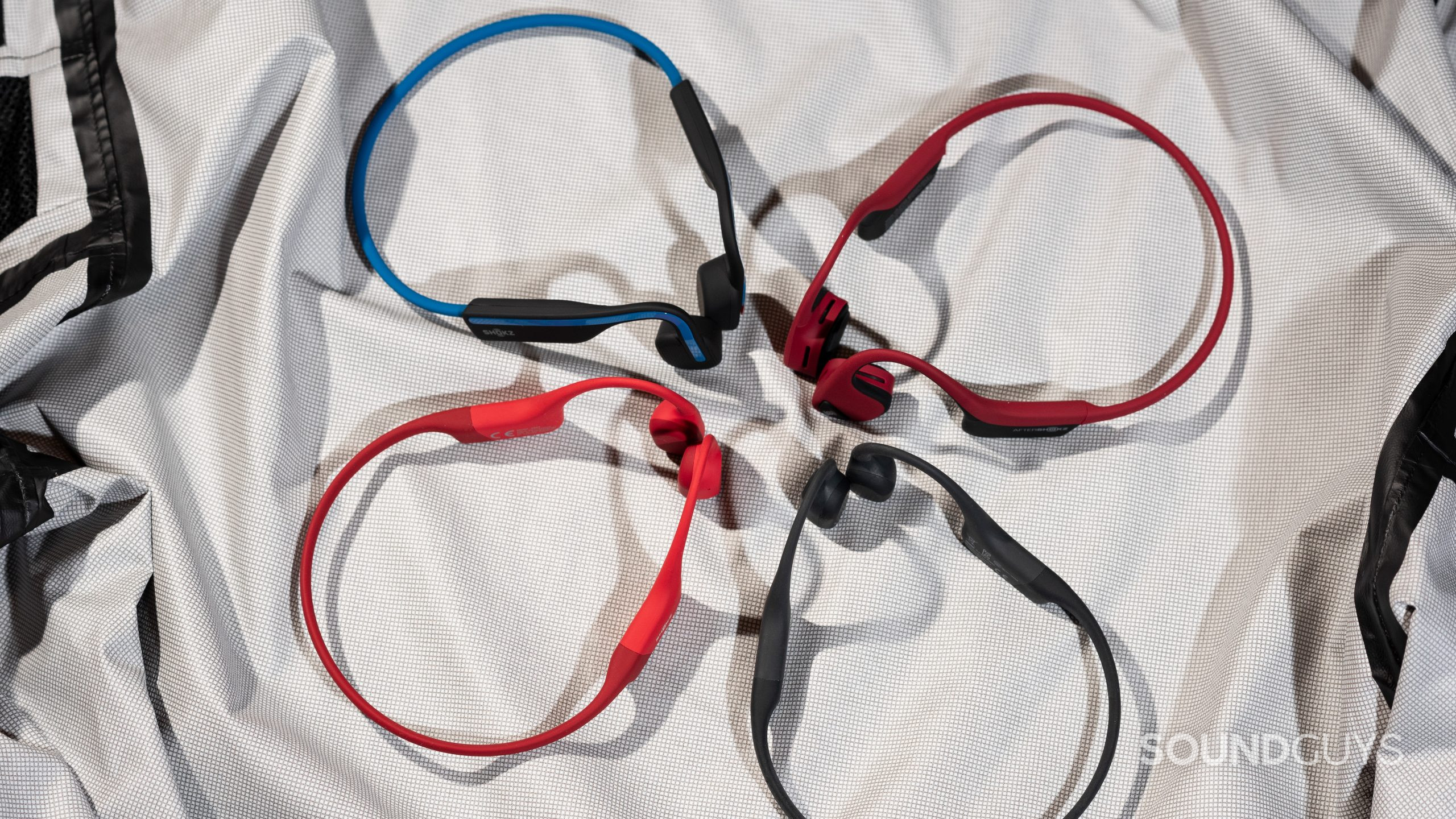
Situational awareness is paramount when biking, and the Shokz OpenRun keeps your ears open to traffic, hazards, and other cyclists. These bone-conduction headphones sit on your cheekbones, sending vibrations through your skull and into your inner ears. I highly recommend them to athletes of all stripes, particularly cyclists.
These headphones have an IP67 dust- and water-resistant rating. Put simply, they’re completely dust-tight and can endure submersion — with some limitations. Suffice it to say, you wear the OpenRun during a downpour, and they should be fine.
Although I have trouble distinguishing the small volume buttons from one another, I appreciate that the OpenRun uses button controls. When biking, it’s more manageable to issue commands with a physical push or squeeze than a blind tap. Plus, I can still operate the buttons during a rainstorm or when I’m dripping sweat onto the headset.
The OpenRun keeps your ears fully open so that you can hear your surroundings and your music.
These headphones have an 8-hour battery life, and they support fast charging. Docking the headphones on the two-pin connector for 10 minutes supplies 90 minutes of playtime. Surprisingly, the OpenRun also has multipoint connectivity. This is usually a premium feature for productivity purposes (e.g., video chatting on your laptop while listening for phone notifications).
While the OpenRun makes me feel safest when I cycle and listen to music, they’re not perfect. The headband can get in the way of a helmet. When donning my helmet, the back pushes against the OpenRun’s band, displacing the headphones and degrading sound quality. Fortunately, an easy fix for this is to put your helmet on first.
If you can temper your sound quality expectations and remember to secure your helmet before wearing the OpenRun, you’ll be happy with these headphones. The OpenRun is also our pick for the best bone-conduction headphones. This breed isn’t for everyone, and the price may not warrant the limited feature set. Check out our next pick for durable earbuds at a stellar price.
Yes, the OpenRun has an onboard microphone for phone calls, but it won’t make your voice sound crystal clear. The person you’re talking with will hear plenty of background noise.
Shokz OpenRun microphone demo (Non-standardized):
How does this microphone sound to you?

Best budget: JLab GO Air POP
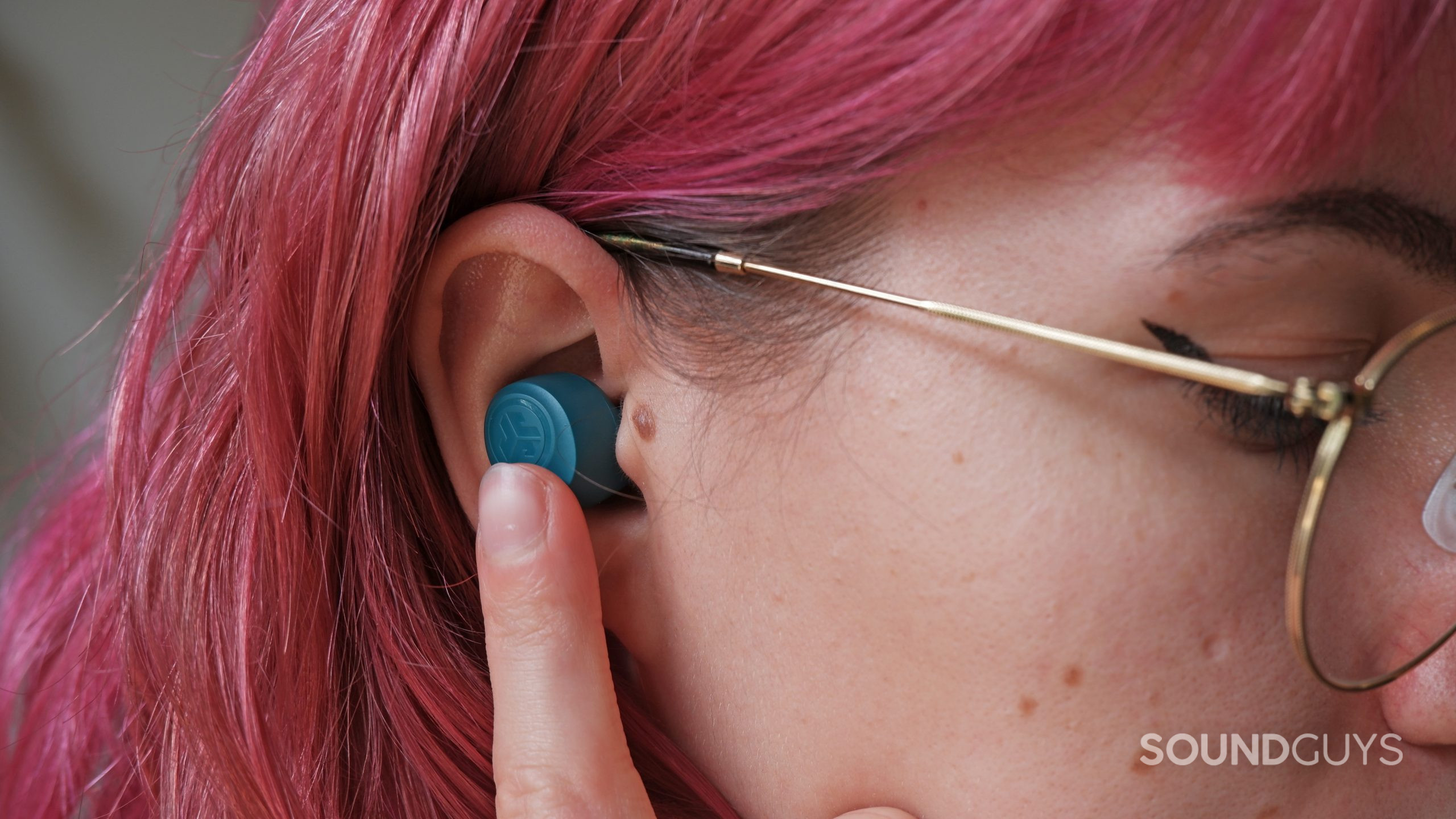
The JLab GO Air POP are an excellent value for bikers. These compact earbuds let you use the left or right earbud for mono listening. The GO Air POP can resist water, and the buds have an IPX4 rating to prove it.
Standalone battery life is head and shoulders above the competition. These lasted over 11 hours in our testing, and the case provides an extra 24 hours of playtime. The earbuds’ small case houses a USB-A cable on its underbelly so that you can recharge it anywhere. As cool as the case is, it can’t fast charge the earbuds. You’ll need to set aside over two hours to recharge the buds 100% from empty.
Using the GO Air Pop is straightforward. There are no gimmicky features or apps to download, meaning the touch controls are set in stone. We like how you can adjust the volume from the earbuds, among other things, but the touch panels aren’t the most sensitive. During our review period, the earbud didn’t always register commands, causing misfires. Controlling the earbuds can become even more complicated in rainy conditions.
The GO Air POP sounds great, fits well, and don't rely on gimmicks.
Control hiccups aside, we’re pleasantly surprised with how the GO Air POP sounds. These buds output bass and midrange frequencies at near-equal levels. When you listen with both buds off the bike, you’ll notice that they also block out plenty of ambient noise.
Ultimately, the GO Air POP are some of the best cheap earbuds you can buy, and they’re great for us bikers, too.
The GO Air POP microphones transmit voices clearly when you speak from quiet environments. But if you try to talk outside while biking, the person on the other end of the call will hear plenty of wind noise.
JLab GO Air POP microphone demo (Ideal conditions):
JLab GO Air POP microphone demo (Street conditions):
JLab GO Air POP microphone demo (Windy conditions):
How does the microphone sound to you?

Best for iPhone: Beats Fit Pro
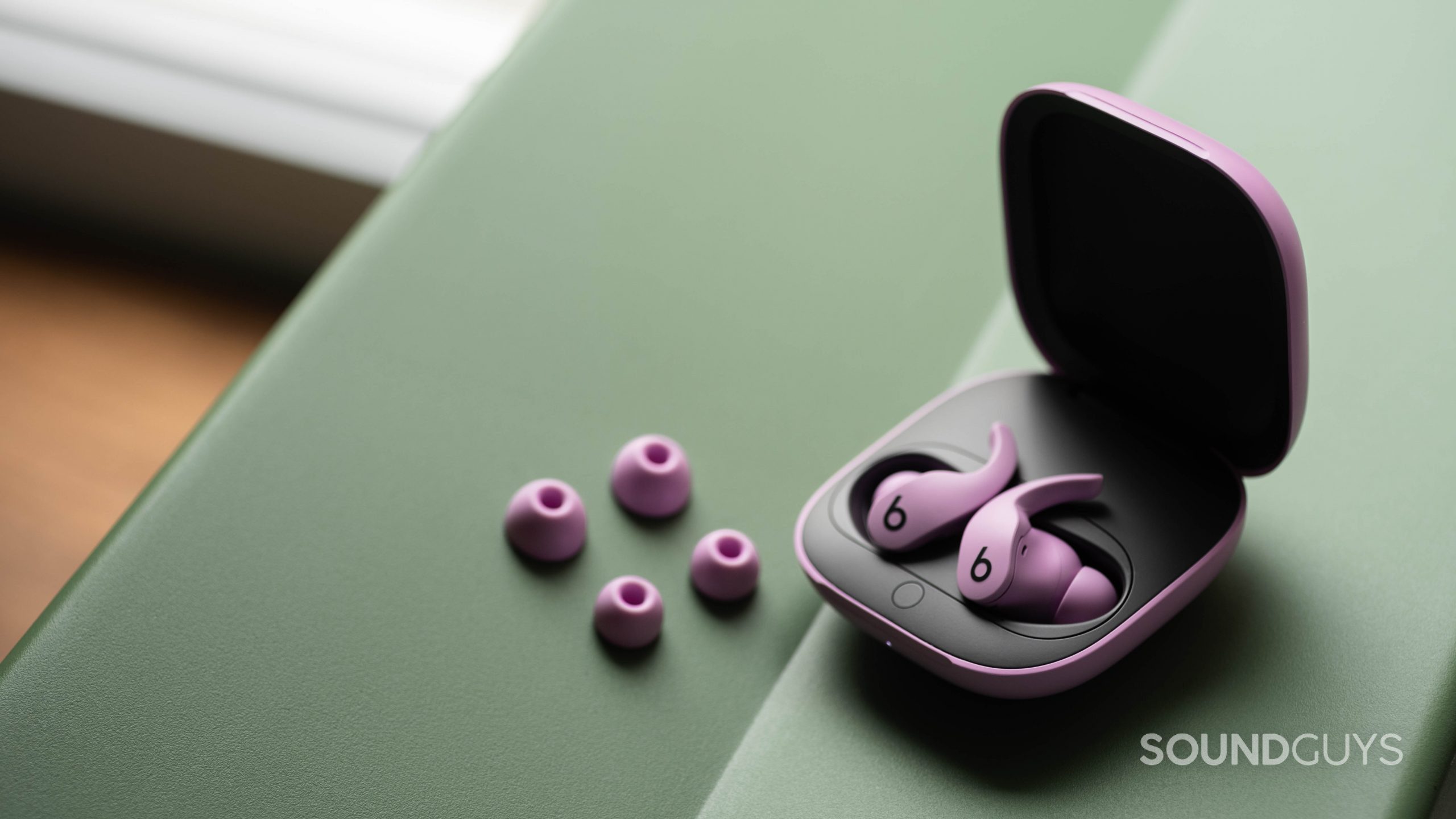
When you finally arrive at your destination, you may not want to hear everything around you. If you want great active noise canceling (ANC) and a bassy sound, get the Beats Fit Pro. These earbuds support mono playback for biking and great ANC for the office.
Beats’ permanent ear wings and interchangeable ear tips (S-L) secure the Fit Pro during all exercises, not just biking. I get the same level of security with the Fit Pro as I do with hooked earbuds, but the Fit Pro offers a more compact design. Granted, the case is still bulkier than others.
A multifunction button rests under each earbud’s “b” logo. This button allows you to control playback and take calls. Again, I find buttons easier to operate when biking because they require less precision and work in the rain. You don’t have to worry too much about the rain with these buds because they have an IPX4 rating.
The Fit Pro have Apple-only features, but they have a Beats app for Android, too.
If you use an iPhone as I do, you’ll appreciate the Apple-exclusive perks like auto device switching and Find My functionality. The earbuds also provide personalized Spatial Audio and head tracking with a compatible iPhone. I don’t use head tracking much but prefer Apple’s implementation to Google and OnePlus’. Auto play/pause works on iOS and Android.
Battery life is very good. With ANC on, the Fit Pro lasted 6 hours and 22 minutes during our standardized testing. The USB-C case doesn’t support wireless charging, nor does it have battery optimization on iOS. On the bright side, placing the earbuds in the case for 5 minutes yields 60 minutes of listening.
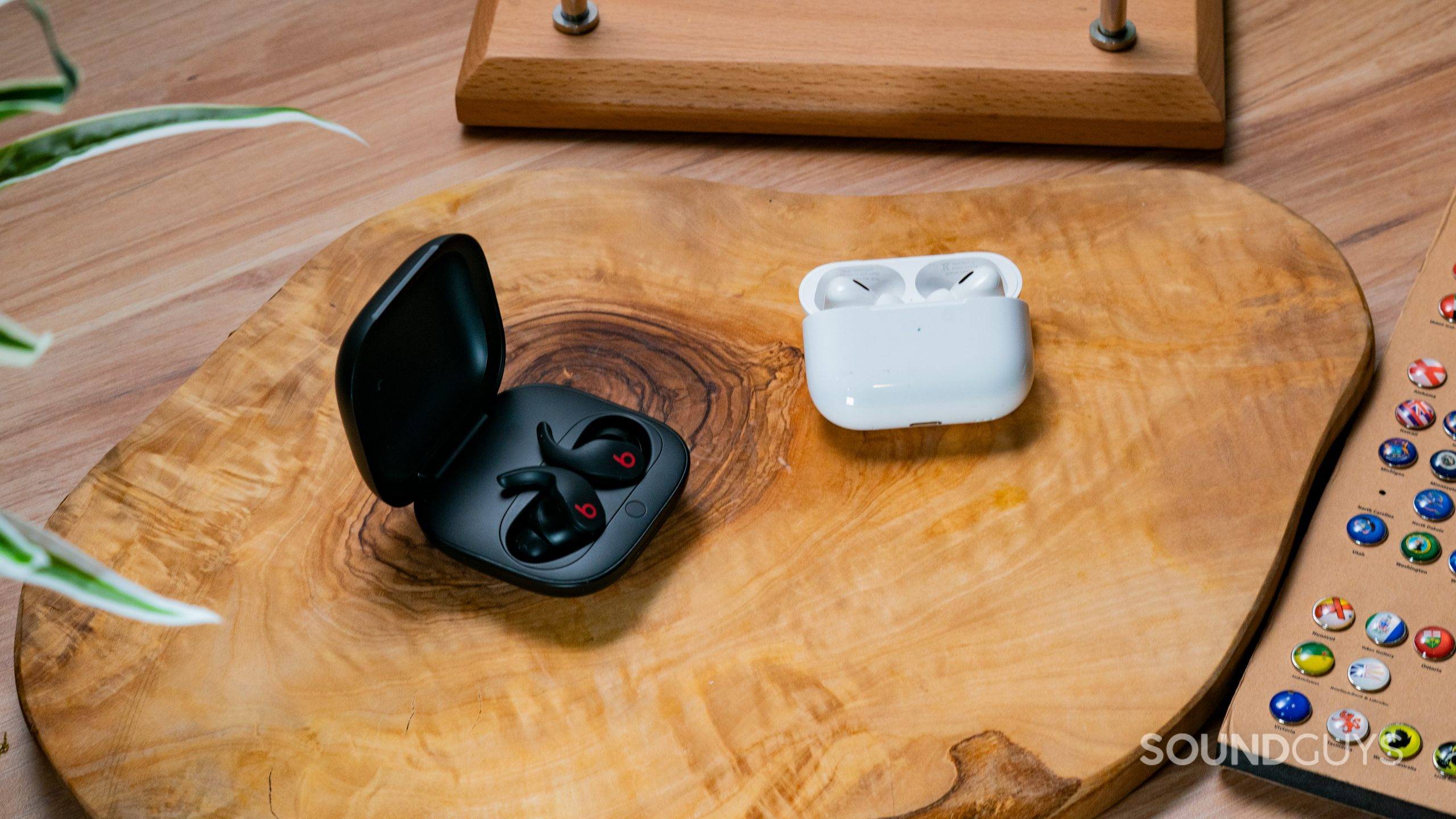
Ultimately, the Beats Fit Pro are the most versatile workout earbuds on this list because their ANC makes them an excellent asset for flights, train commutes, and noisy cafes. Even though there are Apple-exclusive features, the Beats app on Android works well and lets you receive firmware updates.
As much as I like the secure fit of the Beats Fit Pro, the buds can get uncomfortable after 90 minutes. For something you can wear all day, the Bose Sport Earbuds (covered next) may be more up your alley.
The Beats Fit Pro has okay microphone quality. Your voice will come through fairly clearly when you speak from quiet settings. However, if you take a call with noise in the background, it will all get transmitted, too, and wind noise considerably degrades speech quality.
Beats Fit Pro microphone demo (Ideal conditions):
Beats Fit Pro microphone demo (Street conditions):
Beats Fit Pro microphone demo (Windy conditions):
How does the microphone sound to you?

Best durability: Jabra Elite 8 Active
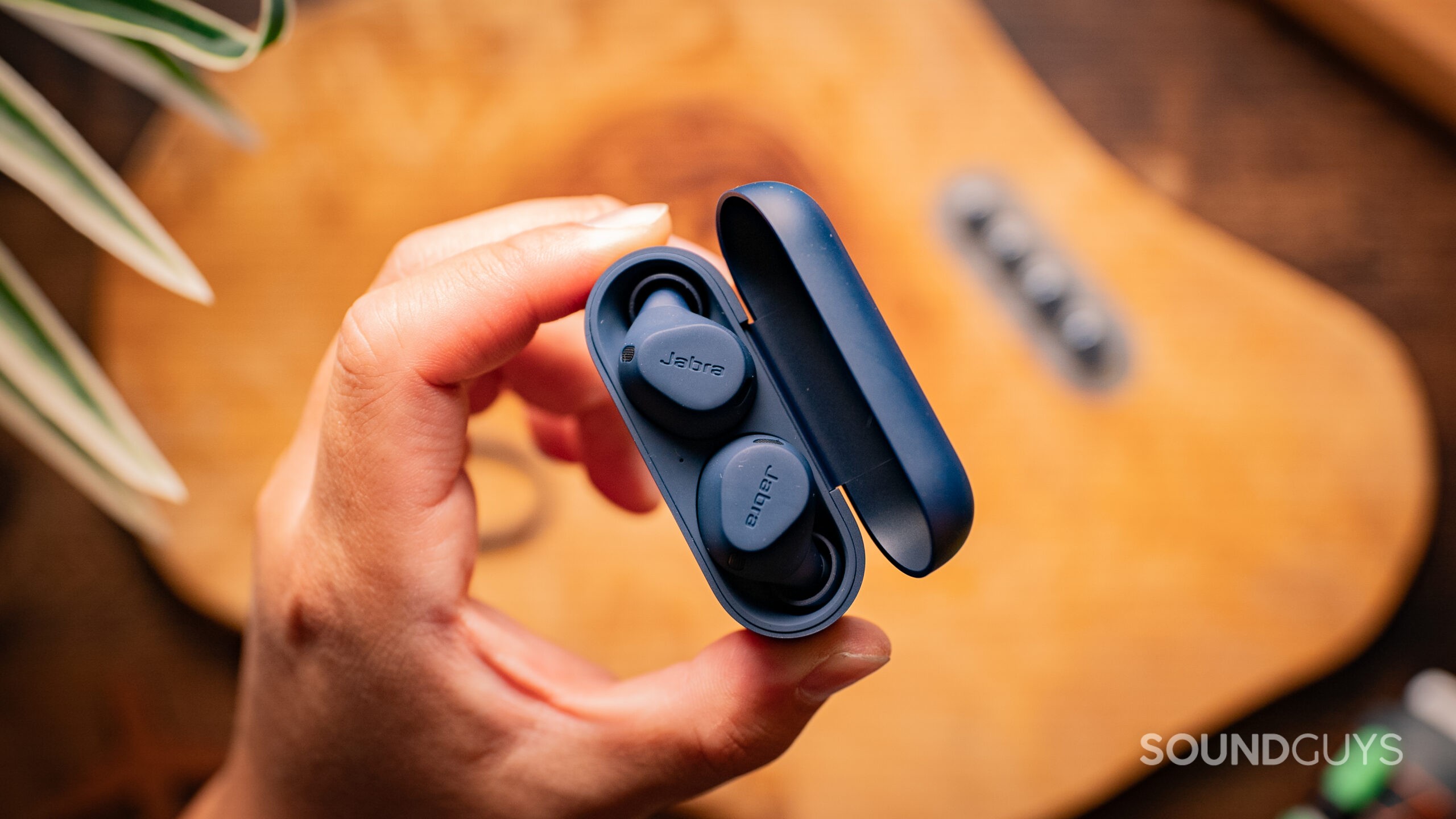
The Jabra Elite 8 Active earbuds emerge as an excellent choice for cyclists and fitness enthusiasts, offering a blend of durability, sound quality, and advanced features that cater specifically to the needs of active users. Firstly, their robust build and IP68 rating ensure they are dust- and waterproof, making them suitable for outdoor cycling and all-weather conditions. The inclusion of three ear tip sizes, along with a unique ShakeGrip coating, ensures a secure and comfortable fit, crucial for maintaining stability during vigorous cycling or workout sessions.
Sound quality is a standout feature of the Jabra Elite 8 Active. With a frequency response that adheres closely to preferred sound curves, they deliver a balanced audio experience with a mild bass boost, ideal for keeping cyclists energized with upbeat tracks during rides. The Adaptive Hybrid Active Noise Canceling (ANC) is particularly beneficial for outdoor environments, effectively muting low-frequency noises such as rumbles, which is essential for immersive cycling experiences while still allowing some ambient sounds for safety.
Moreover, the Elite 8 Active’s practicality extends beyond workouts. With a sleek design, they are equally suitable for office use, blending seamlessly into both active and professional settings. The intuitive controls, including Spotify Tap and compatibility with Google Assistant or Siri, enhance usability. The exceptional battery life, offering over 9 hours with ANC, aligns perfectly with long cycling sessions or extended workouts. Additionally, the fast-charging feature, providing an hour of playback with just a 5-minute charge, is ideal for those on-the-go moments.
In summary, the Jabra Elite 8 Active earbuds are a top-tier choice for cyclists and fitness enthusiasts. They expertly combine durability, excellent sound quality with effective ANC, a secure and comfortable fit, and long-lasting battery life, catering to the dynamic requirements of active lifestyles. Their versatility for use in both athletic and office settings further cements their position as a leading option in the market.


The microphone sounds good from all environments and effectively suppresses background noise.
The Jabra Elite 8 Active uses six microphones to capture your voice. The mic system relays voices of higher and lower registers rather well. You might hear some artifacts, but by and large, it sounds decent. In offices, the mics struggle a little with handling environmental sounds, but your voice is prioritized. When the Elite 8 Active encounters wind, your voice remains intelligible, if a little choppy. Overall, it’s entirely useable.
Jabra Elite 8 Active microphone demo (Ideal conditions):
Jabra Elite 8 Active microphone demo (Office conditions):
Jabra Elite 8 Active microphone demo (Windy conditions):
How does the microphone sound to you?

Best for fitness tracking: Sennheiser MOMENTUM Sport
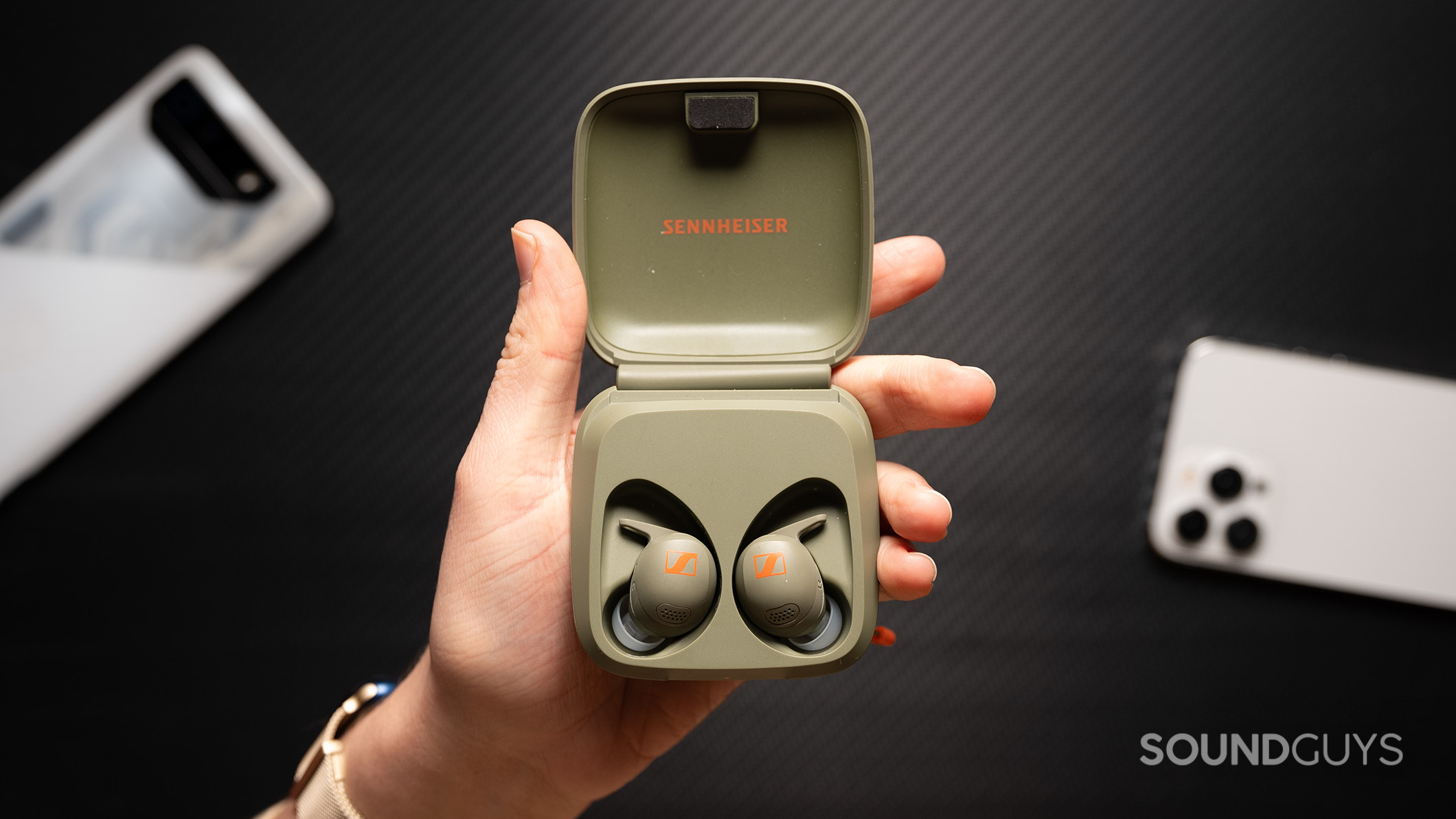
The Sennheiser MOMENTUM Sport earbuds stand out as a premium option for cyclists looking for an all-in-one audio and fitness tracking solution. One unique thing about these earbuds is their built-in heart rate and body temperature sensors, which allow you to ditch wearing a separate fitness tracker. The secure fit and IPX5 water resistance make them well-suited for intense cycling sessions.
While the large earbud size may be uncomfortable for some, the MOMENTUM Sport offers great convenience by combining music playback with biometric data tracking. The companion app provides a comprehensive experience, letting you view your metrics, customize sound settings, and even set up location-based automation.
The sound quality is geared towards bass-heavy genres like EDM and hip-hop, making these earbuds a good match for powering through tough rides. However, the noise cancelation is just average, and the microphones struggle in windy conditions, which could be a consideration for cyclists. Overall, the Sennheiser MOMENTUM Sport is a unique option for data-focused cyclists willing to splurge on premium features.

The microphones on board the earbuds do a great job of accurately reproducing the sound of the voice. In ideal conditions, you can hear what each voice is saying in our microphone demonstration below.
Sennheiser MOMENTUM Sport microphone demo (Ideal conditions):
In real-world conditions, the microphones struggle a bit with background noise. In our simulated office and street environments, you can hear all the background noise around the voice. That said, you can still hear each word the voices are saying. Hearing some of the voices becomes difficult in a simulated wind environment, so I wouldn’t recommend conversing with the earbuds on a windy day or while cycling.
Sennheiser MOMENTUM Sport microphone demo (Street conditions):
Sennheiser MOMENTUM Sport microphone demo (Windy conditions):
Best microphone: Sony LinkBuds S
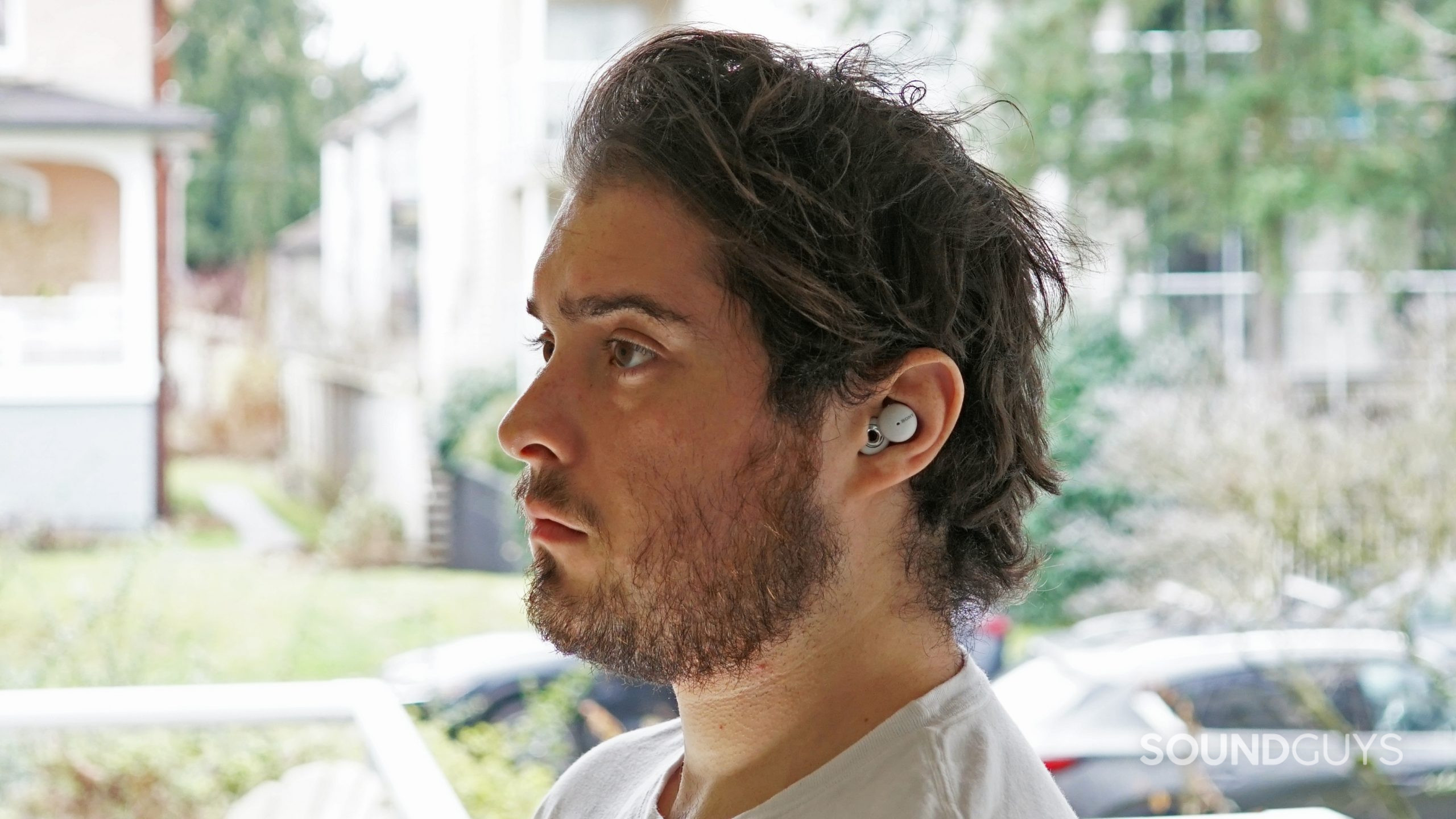
The Sony LinkBuds are great AirPods alternatives that fill the unsealed earbud niche. At first, the LinkBuds look like traditional earbuds, but closer inspection reveals their unique donut-shaped tips with circular cutouts. These openings hover above your ear canals. Like the OpenRun, you can simultaneously hear your music and surroundings while enjoying stereo playback.
The LinkBuds have an excellent microphone system for outdoor gabbers. You can take a call from the LinkBuds and feel confident that every word you say will be understood. The microphones cancel out much of the wind noise in our demo below, though you can still hear the unpredictable keyboard sounds in our office noise demo.
The LinkBuds mic system is pretty good in quiet environments and rejects plenty of background noise.
Note: we don’t recommend biking and talking on the phone. Instead, we suggest you take a call while walking outside from your bike to your location.
Sony LinkBuds microphone demo (Ideal conditions):
Sony LinkBuds microphone demo (Street conditions):
Sony LinkBuds microphone demo (Windy conditions):
How does the microphone sound to you?
In our LinkBuds review, the earbuds proved comfortable. Unlike some other earbuds, Sony provides five sets of removable silicone wing tips (XS-XL) that secure the buds to your concha. If you go over a large pothole or hit bumpy terrain, these buds should stay put.
The LinkBuds have an odd control system that Sony dubs “Wide Area Tap.” This allows you to tap the space in front of your ear — yes, on your face — to skip tracks. It works reliably but looks pretty silly. Most people will disable Wide Area Tap in favor of standard touch controls in the Headphones Connect app.
The LinkBuds microphones make it possible to take a phone call outside on a windy day.
The sound quality could be better, but it’s always a challenge for unsealed earbuds. Even so, the LinkBuds reproduce dramatically less bass than their contemporaries (e.g., AirPods and Galaxy Buds Live). To Sony’s credit, these buds sound okay in quiet settings, and the frequency response helps vocal content stand out. Plus, it’s a fair tradeoff for being so keyed into your surroundings.
Battery life is above average, reaching 5 hours and 41 minutes in our testing. The case provides 12 hours of portable battery life and charges via USB-C. There is no wireless charging, but the case can rapidly charge the buds. A 10-minute charge nets 90 minutes of listening.
Ultimately, the Sony LinkBuds aren’t for everyone, but their microphone quality, fit, and comfort make them great earbuds for cycling. For a more versatile option, consider the Beats Fit Pro.
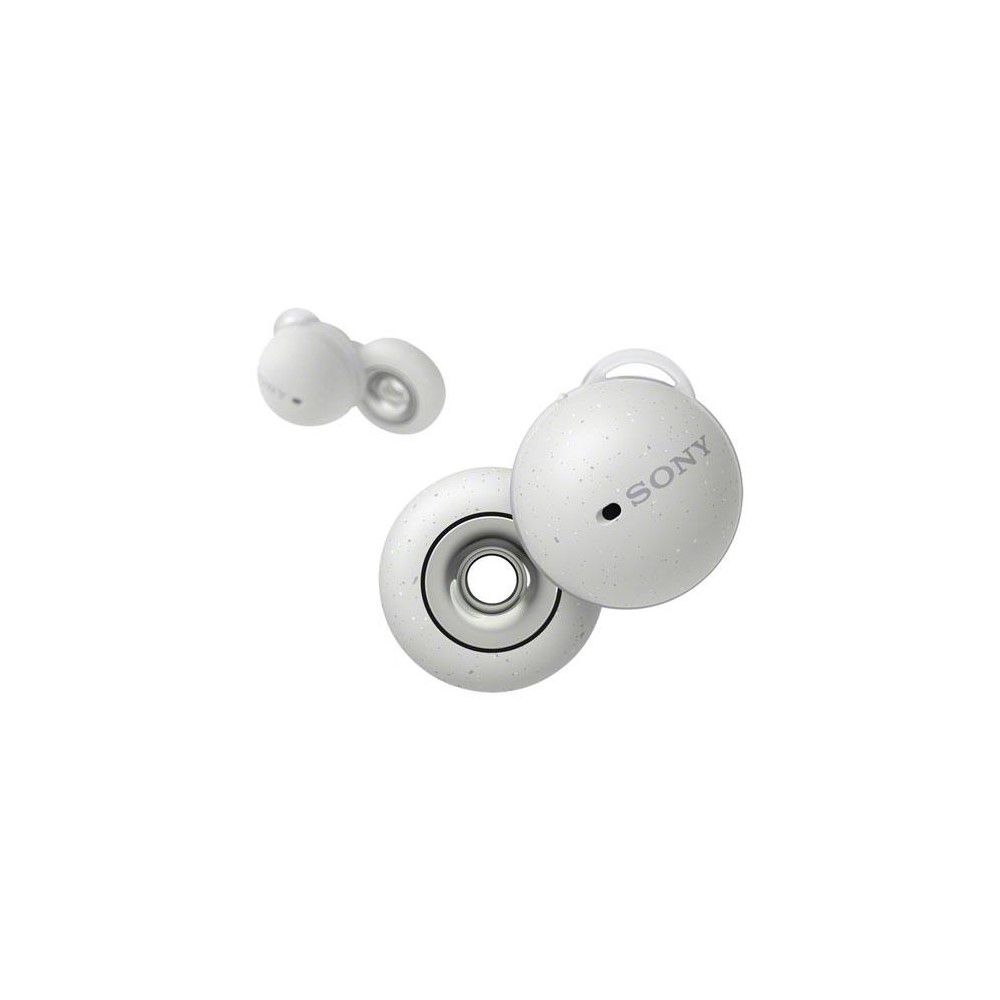
Are the Shokz OpenRun Pro good for cycling?
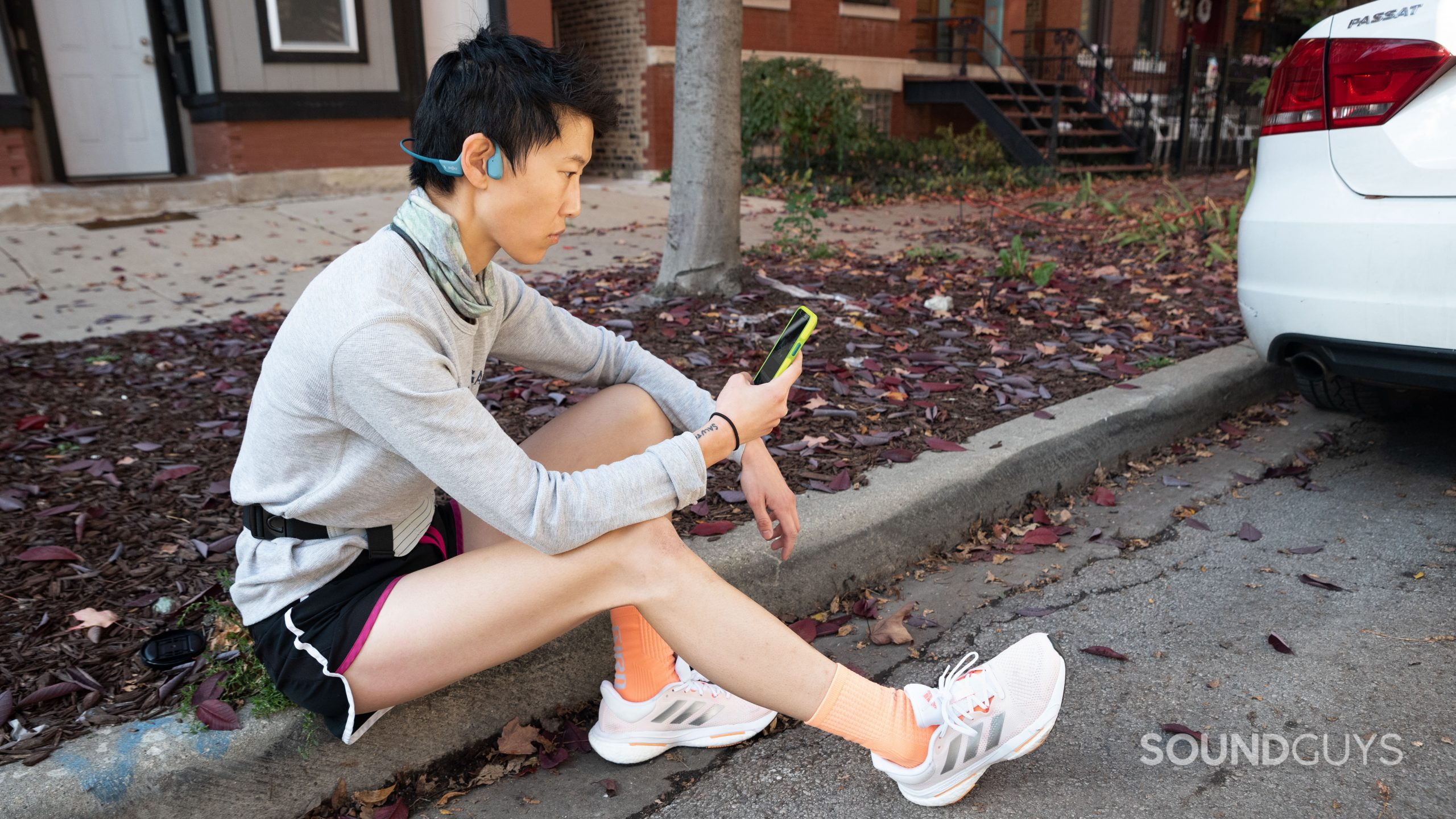
The Shokz OpenRun Pro is just as safe for cycling as the OpenRun — our top pick for biking headphones. However, the OpenRun Pro has a less impressive durability rating (IP55 vs IP67) and costs $50 more than the base model.
I still recommend the OpenRun Pro for cyclists who want the best bone conduction tech available. These use a 9th-generation bone conduction technology with Shokz’ TurboPitch. This combination reproduces louder bass and keeps audio more consistent as the headphones move around. With the OpenRun, I experience some audio quality inconsistencies when I chew or drink, which isn’t as dramatic as the OpenRun Pro. On top of that, you get app support with the OpenRun Pro for firmware updates and upgrades.

Can you safely use the AirPods Pro 2 for cycling?
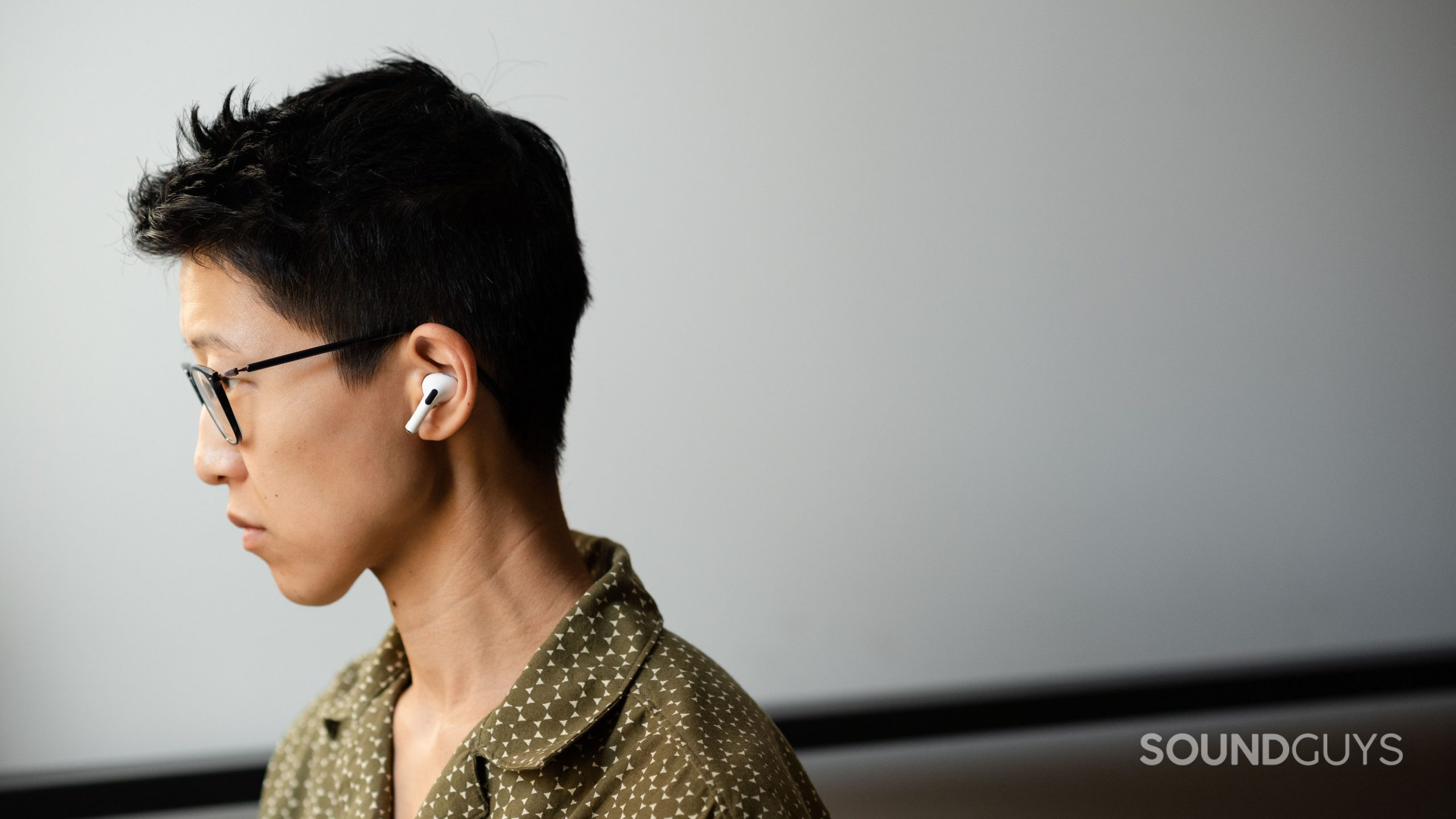
The AirPods Pro 2 supports mono listening with either earbud, so you can always have an ear on passing cars and cyclists. These buds also have Apple’s Adaptive Transparency. This audio pass-through tech allows background noise through the buds while decreasing loud, unpredictable sounds. While I find Adaptive Transparency much more pleasant than other earbuds’ environmental pass-through modes, I don’t recommend using it instead of mono mode.
The earphones and case all have an IPX4 rating so that light sprinkles won’t wreck them. If the weather is too dangerous to bike, use the earbuds’ noise canceling to quiet your train or bus commute. Remember, we only recommend the AirPods Pro 2 to iPhone owners, but if you fit that bill, these are the best iPhone earbuds.

The best cycling headphones and earbuds: Notable mentions
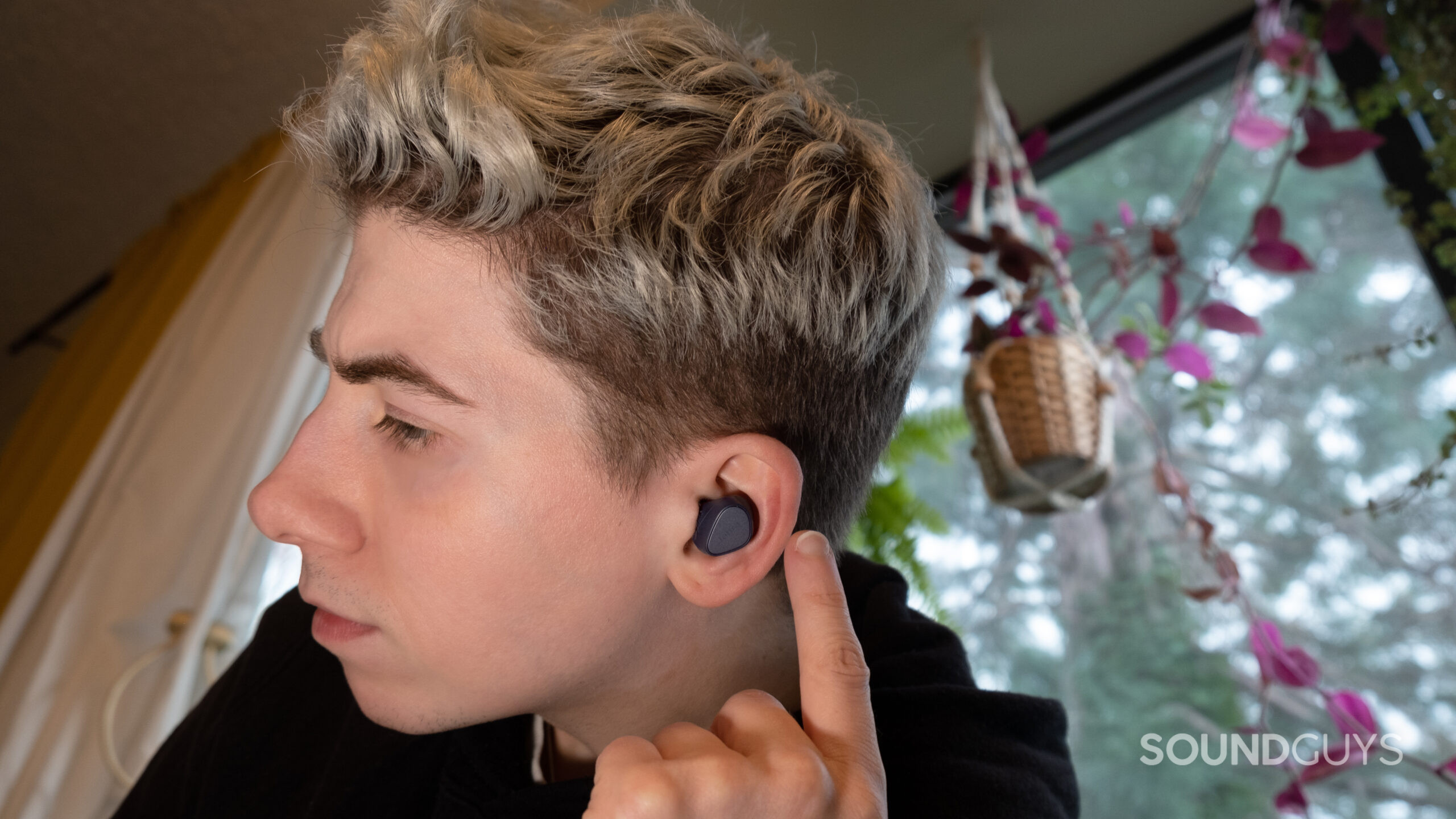
Here are a few more earbuds and headphones you should look out for.
- Apple AirPods (3rd generation) ($195 at Amazon): These earbuds do occlude your ear canals but don’t block them entirely. These buds fit more securely than the AirPods (2nd generation) and have more advanced onboard controls. You also get an IPX4 rating for the case and earbuds, protecting both from rain and sweat.
- Anker Soundcore Life A1 ($49 at Amazon): These affordable earbuds have an IPX7 rating that makes them more durable than the competition. The case supports wireless charging; you can use either earbud in mono mode.
- Jabra Elite 4 ($79 at Amazon): These buds have an IP55 dust- and water-resistant build with button controls. You can use the left or right bud for mono playback, and they support aptX for high-quality, lag-free playback on Android.
- Jabra Elite 7 Active ($179 at Amazon): These workout earbuds are safe from any moderate weather event, thanks to their IP57 rating. The earbuds sound great; you can customize the sound in Jabra’s app. You can drown out your surroundings when you’re not biking with noise canceling. Otherwise, plop one earbud in, and you’re ready to ride.
- Jaybird Vista 2 ($117 at Amazon): Jaybird’s ear tips provide a secure fit, and the wind filtering reduces wind noise that cycling outside amplifies. These earbuds are nearly indestructible with their IP68 and MIL-STD-810G certificates.
- Shokz OpenFit ($179 at Amazon): These are Shokz’s debut true wireless earbuds. While the OpenFit doesn’t use bone conduction, it keeps your ears open to your surroundings. The ear hook design keeps the buds in place during vigorous rides, and the IP54 rating safeguards them from the elements.
What you should know about the best headphones for cycling
Here are the main features to look for when shopping for the best cycling headphones.
Durability
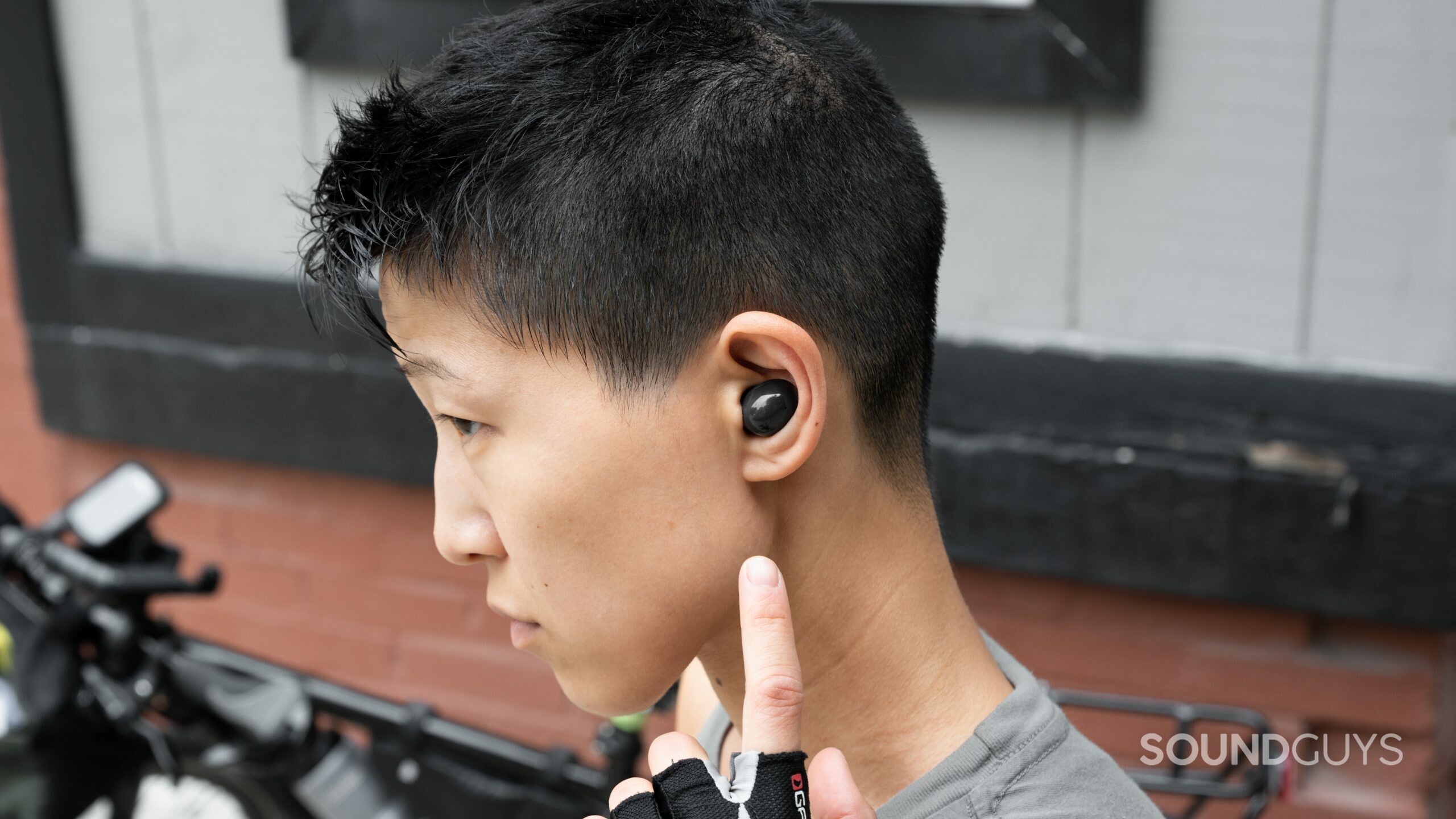
It doesn’t matter if you’re cycling outside or inside; your earbuds need water resistance. Water-resistant IP ratings range from 0-8. Minimally, we recommend getting earbuds with an IPX2 rating. This should suit casual commuters who don’t expect to sweat much while cycling.
More intense bikers shouldn’t settle for anything less than an IPX4 rating. This ensures protection from omnidirectional water splashes. In other words, an IPX4-rated headset should survive your sweetest workouts and some rain exposure. Anything greater than IPX is icing on the cake.
Open-ear fit or mono listening
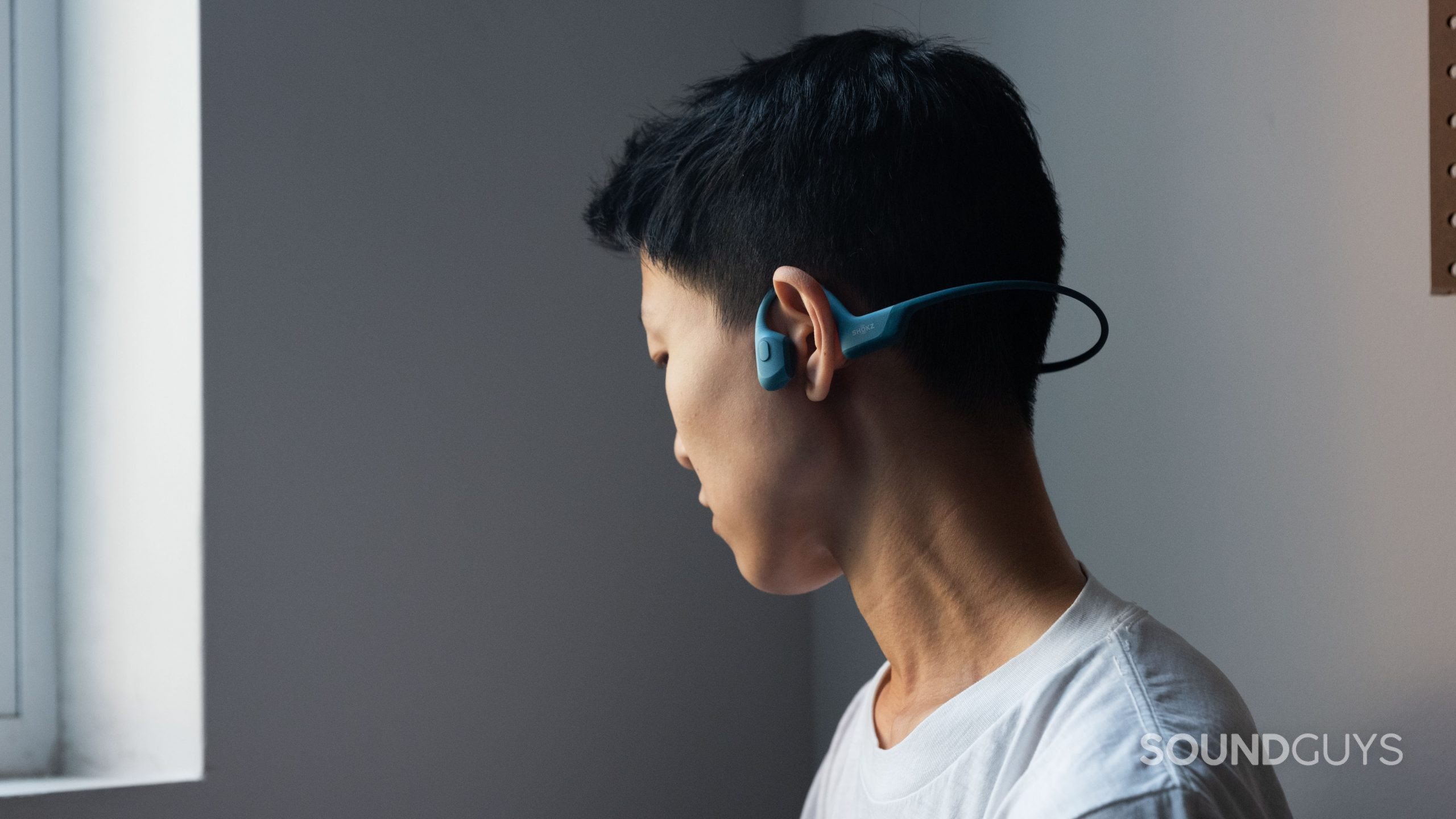
Outdoor cyclists need to remain aware of their surroundings. If you wear sealed earbuds in both ears, your music may sound better, but you’re putting yourself in a dangerous (sometimes illegal) position. Therefore, we only recommend biking with open-ear headphones or earbuds supporting mono mode.
Comfort
You also want to make sure that the headset is comfortable. Not every vendor allows you to return used earbuds. If you know you have sensitive outer ears, winged earbuds may not work. Likewise, if light temple pressure can trigger a headache, you may not like bone-conduction headphones. It’s best to take stock of how your ears and head have historically reacted to certain sensations before buying “the best” headset.
How we test the best headphones for cycling
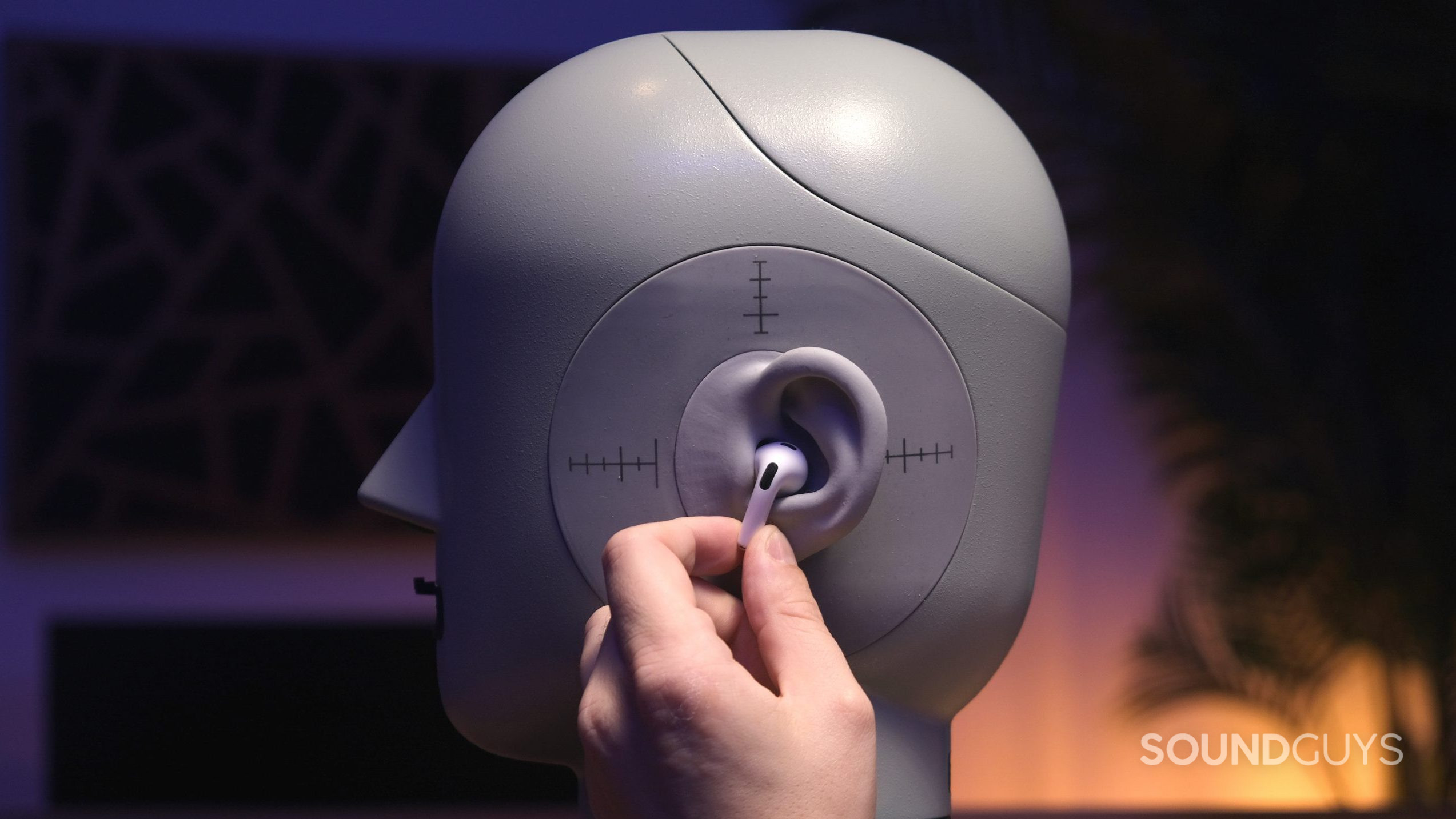
With our Bruel & Kjaer 5218, we obtain objective measurements through various tests. We specifically test the isolation, frequency response, and battery life of earbuds and headphones.
- Isolation test: We use a shaped pink noise sample at 90dB(SPL) measured at the ear of the B&K 5218. We perform this one with the earbuds off and another time with the earbuds on. It’s basic math from there, subtracting one curve from the other.
- Frequency response test: We play several sine sweeps through the headphones and earbuds. We log the result once we arrive at a repeatable result demonstrating a good seal.
- Battery life test: We use a simulated program signal and a level meter to find the setting for music output peaking at 75dB(SPL). We then play our test track on an infinite loop until the product’s battery depletes. This way, we can compare all battery results on an even field.
These simple tests cover the main concerns about wireless earphones, but the results aren’t gospel. Battery life will vary depending on the volume level and the features you enable.
Likewise, isolation performance and frequency response depend on getting a good seal around your ears or at your ear canals. If you have trouble fitting earbuds, you may need third-party ear tips.
How we choose the best headphones and earbuds for cycling
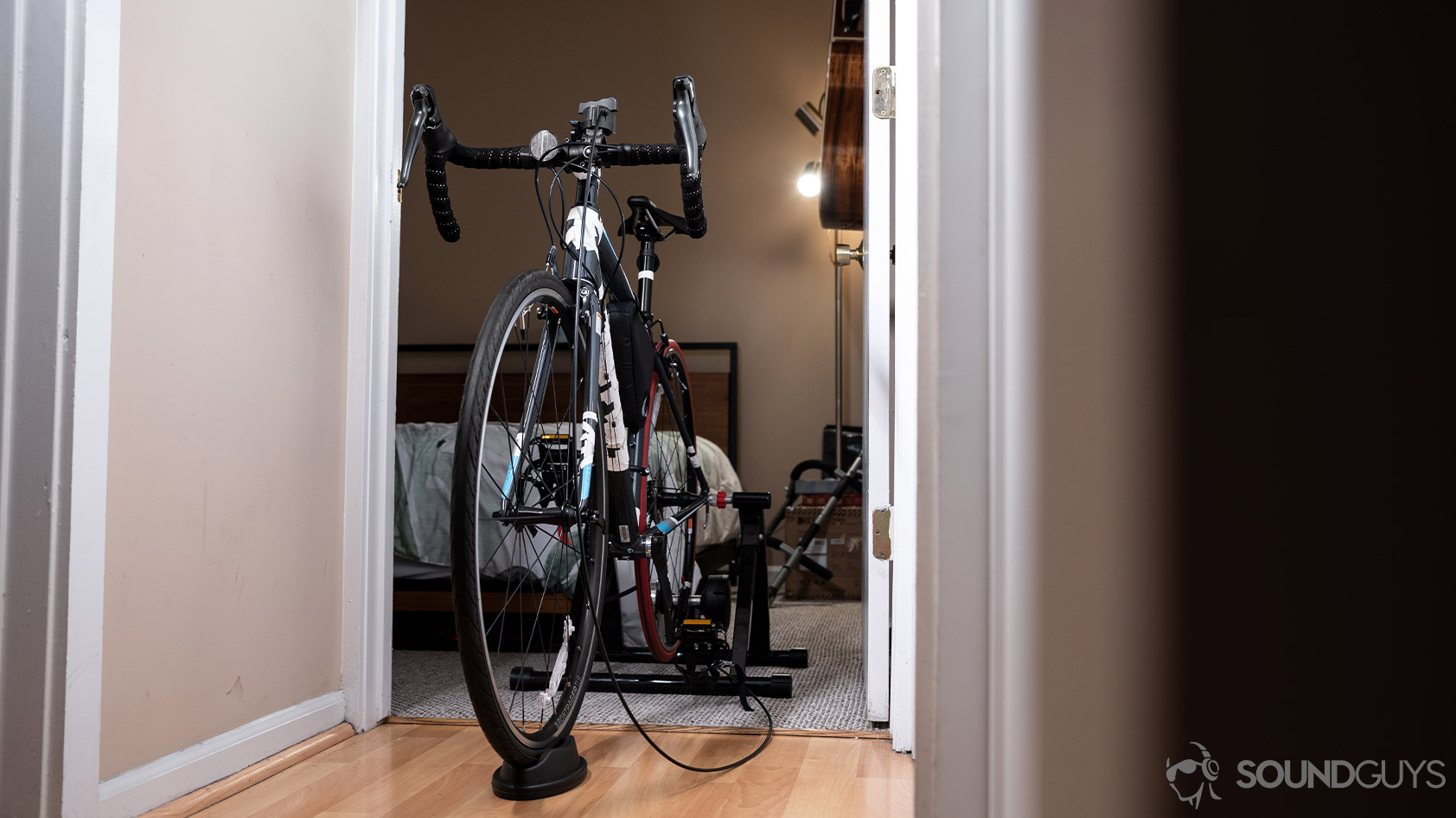
We test as many products as possible for all our best lists, including cycling headphones and earbuds. If we haven’t tried one yet, we diligently research a product. Shokz, formerly AfterShokz, landed the top spot for its design and durability. However, our other options may bode well for activities beyond cycling. You’re bound to enjoy any of the above.
Why you should trust SoundGuys
None of our writers benefit from recommending one product over another. Although the site operates via referral links, no one here will know whether you did or didn’t click a link. And while we agree that audio is a somewhat subjective experience, certain things are quantifiable, and we objectively test products when possible. We want you to be happy with your purchase.
Frequently asked questions about cycling headphones and earbuds
Yes, bone conduction headphones are safe for cycling. They leave your ears completely open to your surroundings. This design lets you hear everything around you and your music.
Certain types of earbuds and headphones can be safe to cycle with, like all the ones we’ve listed here. Bone conduction headphones are safe for cycling because they don’t seal you off from the world. If you use earbuds, only listen with one ear in mono mode or enable transparency mode when cycling.
In the US, seven states have laws on cycling with earbuds and headphones. The following states permit using one earbud while biking: California, Delaware, Maryland, New York, and Virginia. Florida and Rhode Island completely prohibit headphone and earbud use while biking. The rest of the 43 states allow cycling with headphones and earbuds. Again, if you use earbuds for biking, leave one ear open to your environment.
Yes, open-ear headphones are excellent for cycling. They allow you to stay aware of your surroundings, like traffic and other cyclists, while enjoying music or podcasts. This design promotes safety by keeping your ears unobstructed, enabling you to hear ambient sounds clearly.
The Bose QuietComfort Ultra Earbuds are probably the best, though not the most ideal, headphones on the market for cycling. They offer a comfortable fit, excellent noise cancelation, and clear sound quality. They have a secure fit, essential for active use, while the transparency mode allows for environmental awareness, a critical factor for cycling safety.